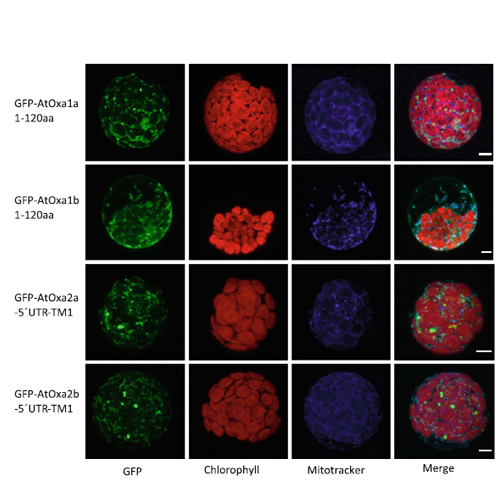Arabidopsis thaliana Oxa proteins locate to mitochondria and fulfill essential roles during embryo development
21-Nov-2012
Planta, 2012, DOI 10.1007/s00425-012-1793-9, Volume 237, Issue 2, pp 573-588 published on 21.11.2012
Planta, online article
Planta, online article
Members of the Alb3/Oxa1/YidC protein family function as insertases in chloroplasts, mitochondria, and bacteria. Due to independent gene duplications, all organisms possess two isoforms, Oxa1 and Oxa2 except gram-negative bacteria, which encode only for one YidC-like protein. The genome of Arabidopsis thaliana however, encodes for eight different isoforms. The localization of three of these isoforms has been identified earlier: Alb3 and Alb4 located in thylakoid membranes of chloroplasts while AtOxa1 was found in the inner membrane of mitochondria. Here, we show that the second Oxa1 protein, Oxa1b as well as two Oxa2 proteins are also localized in mitochondria. The last two isoforms most likely encode truncated versions of Oxa-like proteins, which might be inoperable pseudogenes. Homozygous mutant lines were only obtained for Oxa1b, which did not reveal any significant phenotypes, while T-DNA insertion lines of Oxa1a, Oxa2a and Oxa2b resulted only in heterozygous plants indicating that these genes are indispensable for plant development. Phenotyping heterozygous lines showed that embryos are either retarded in growth, display an albino phenotype or embryo formation was entirely abolished suggesting that Oxa1a and both Oxa2 proteins function in embryo formation although at different developmental stages as indicated by the various phenotypes observed.











